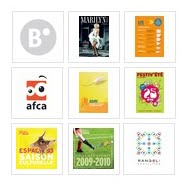Prepare a design brief in advance of design concept development. This process will save time and ensure more effective design results.
Ensure your brief includes business objectives, desired outcomes and a clearly articulated design strategy.
Get the most out of your design brief. For designers they become a key way of understanding the business problem to be solved and the audience they are targeting. For business partners, design briefs offer an opportunity to clarify their actual need for a design project, and give a quantifiable means to measure return on investment. Above all, design briefs provide an opportunity to ensure that all stakeholders are in unanimous agreement with the approach and process to be followed in developing an effective design solution.
Assume nothing. Many design projects go wrong because someone 'assumes' someone else knows what they know. All parties involved must be able to ask as many questions as necessary when developing the design brief. Design briefs are produced to ensure absolute clarity, understanding, and agreement from all stakeholders.
Write up your design brief to avoid comments such as, 'Don't you remember I told you...', or, 'I don't recall saying that', which often lead to confrontations which may delay the successful completion of design projects.
Remember partnership means working 'with' people, not working 'for' them. 'Accountability' means accepting responsibility for outcomes. The commissioner and the designer must be partners - working with each other - and both accepting accountability.
Don’t have a standard design brief. Design briefs should vary according to the discipline involved. For example, a design brief for a new product design will include many areas that are not necessary for a graphic design project for a piece of literature. Practitioners in each design discipline will develop their own list of essential ingredients for each design brief.
Always include an appendix of some sort to include competitive samples, and other 'inspirational' materials useful to a design team.
Archive all your design briefs. Many projects undertaken later will have similar objectives, and you can save time by referencing past briefs for projects.
Send a copy of the design brief to all parties involved. This will help when reviewing the final solution for implementation.
(Peter L. Phillips for the Design Council)






